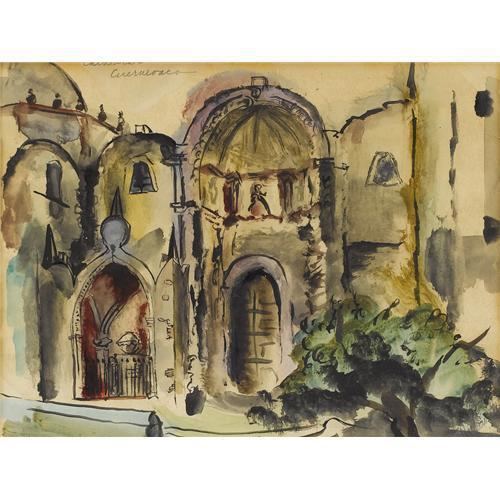Name Veronica Helfensteller | ||
 | ||
Biography

Veronica Helfensteller (1910–1964) was an American painter and printer, who was a member of the Fort Worth Circle, a group of artists in Fort Worth, Texas, active in the 1940 and 1950s.
Contents
Born in 1910, Helfensteller's parents were Armin and Louise Helfensteller. She lived in Fort Worth during her early years. In 1926-27, she studied at the School of Fine Arts, Washington University in St. Louis (St. Louis, Missouri) before continuing her studies at the Colorado Springs Fine Arts Center (Colorado Springs, Colorado).She later studied at the International School of Art in Budapest Hungary.
Helfensteller exhibited her works in a solo show at the Fort Worth School of Fine Arts in 1938. Animals were at the center of many of Helfensteller's works. They were often depicted in fantastical, allegorical settings. Helfensteller was one of six artists from the Fort Worth group whose work was shown in the Weyhe Gallery in New York in 1944. In 1944, she began etching sessions that were attended by other Fort Worth Circle artists.
That same year, she began etching sessions that were attended by other Fort Worth Circle artists.Kelly Fearing, Dickson Reeder, Bror Utter, Lia Cuilty, Bill Bomar, Cynthia Brants and others would meet at Helfensteller's to work on their art. These weekly meetings were an opportunity for the artists to discuss art, listen to music, and borrow Helfensteller's printmaking press.
The last survivor of these long-ago meetings, Fearing, recalls them as a magical time in the waning days of a world war, a time of inventiveness and exuberance. Some nights they put aside their experimental engravings and, helped by the sherry they all adored, broke out into impromptu dancing.
After the group separated, Helfensteller moved to Santa Fe, New Mexico, where she opened a candy shop.
Her work was shown in the retrospective exhibition "Beyond Regionalism: The Fort Worth School (1945–1955)" (Albany, Texas, 1986); in the exhibition "The Texas Printmakers, 1940–1965" (Meadows Museum, Dallas, 1990), and the exhibition "Prints of the Fort Worth Circle, 1940–1960", (Archer Milton Huntington Art Gallery, 1992). Her work is held in the collections of the Modern Art Museum of Fort Worth, the Dallas Museum of Art, and the Museum of Fine Arts, Houston.
Later she moved to Tucson, Arizona, where she taught art history and art appreciation at the Valley School for Girls.
She died in Tucson, Arizona in 1964.
Art
Veronica Helfensteller's artwork was influenced by the artists around her. As an member of the Fort Worth School, she was one of the Texas Modernists, whose works were influenced by American Regionalism, European Cubism and Surrealism.Helfensteller was an avid traveler and these travels influenced her work. Hoops and Kites (1948) incorporates a number of hieroglyphic figures, which reference Mayan hieroglyphics she would have seen in Guatemala. This work balances her Latin American travels with those of the Southwest.
Her works had been largely forgotten until gallery owner, Dutch Philips discovered some of her letters at an estate sale. Upon discovering her art, Dutch Phillips organized the first exhibition of sale of her work in over 40 years.
